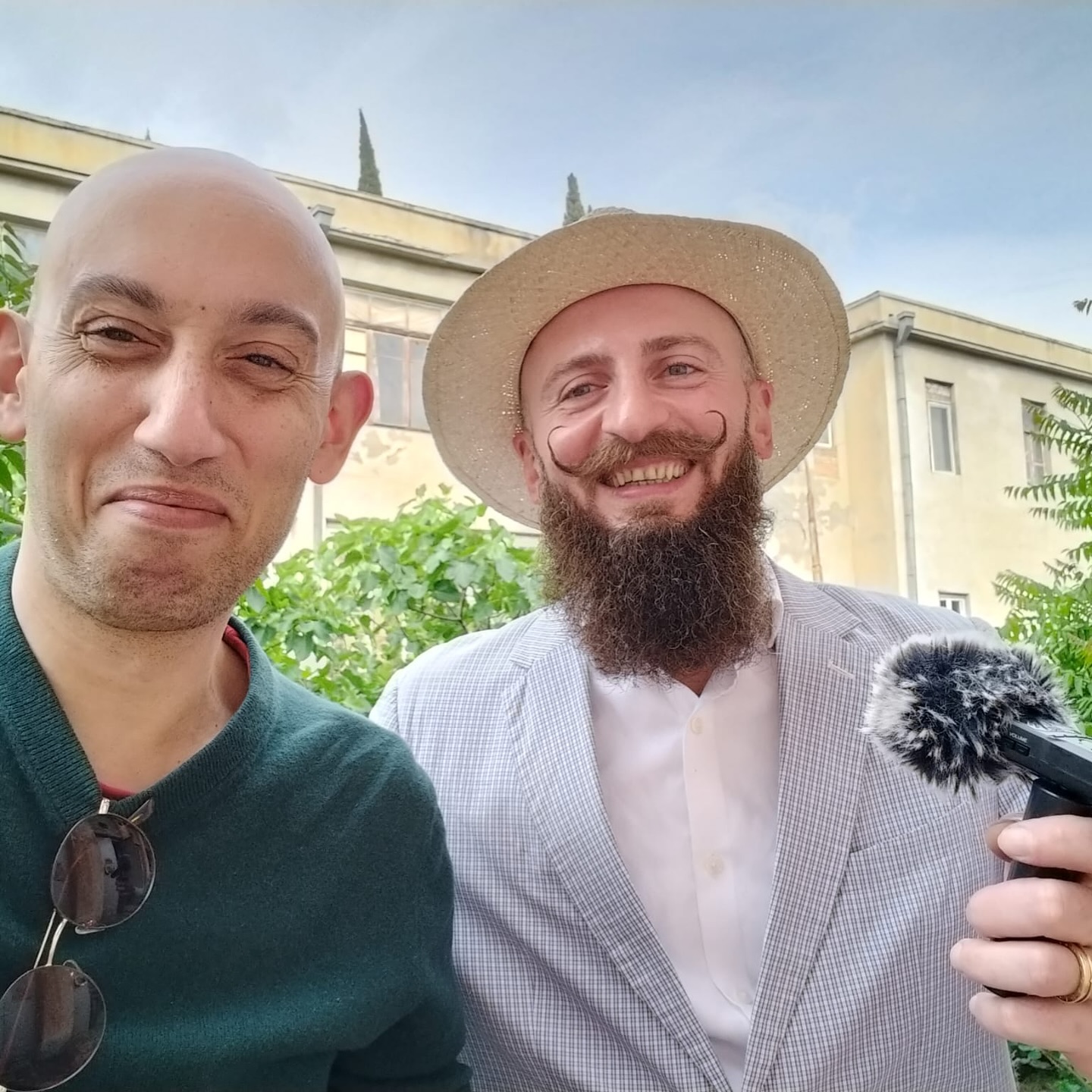Blog . 25-10-2023

Vintage in Kakheti - Let’s Look at Dionysus
Tako Zhuruli’s Blog
[Zhuka-Sano Winery]
This year’s vintage was a real celebration. We have seen in the pictures—greenery, sun, and fun pouring out from the canvases—that’s exactly what happened. The year is definitely reflected in the natural wines, and since 95% of the wine is the vineyard, the wine of 2024 will also remember this: good weather, the play of rain and sun, soft, velvety air, the peaceful breath of the vineyards, rows full of healthy grapes, and satisfied winegrowers.
Whether he took care of it or not, whether he looked after it or not—everyone had a good harvest this year. When no one entered the whole season, when the grass overran and covered it, when it was mowed and breathed only for picking, even those vineyards revealed their full bunches like hidden gold. And I don’t know, maybe because it became difficult to harvest such large crops, the labor force was busy this year. Many rose up and worked in their own vineyard. They invited friends and relatives, gave them a pair of scissors, and cut them into rows. From one vineyard, the cheering shout of the brigades was heard; from another, sounds like children squealing and elders’ bells were deafening the villages. I think the whole of Georgia was overtaken by this joy.
But the main story is still about the vineyard and its caretaker. Together, they will reach the one and only important day—the day of harvesting. Only they know what they went through, what kind of days they had, how they lived the whole summer. Finally, the voice of Dionysus will be heard: “Look, it’s time!” and you will take home the harvest to your cellar, as if you were bringing your children and parents to pour water, earth, sun, and air from there, and bring with them the memory of the past summer, under the vine. Sit down and immerse yourself in the stems and skins, your knowledge and doubts, and thus exhaust your whole story to the end and start the birth of wine.
Our terroirs, our appellations, places, and areas are so important that the names of the cellars get lost somewhere in them; they are as many as there are vineyards in Georgia. And you know what I think? Yes, tending a vineyard is difficult, but that’s what viticulture is all about: the birth of wine, not expenses.
I am filled with joy when our fellow winegrowers post pictures of their vintages on the web, tell stories of crushing and swirling grapes, and show us a variety of births—the crowning glory of their year.
With us, in Ruispiri and Ikalto, they have a saying — don’t praise the harvest until the Alaverdoba holiday, because it can still get hail. After Alaverdoba, both the vineyard and its owner are considered survivors. Now, as I am writing this, I am also waiting for Alaverdoba, for my Rkatsiteli to ripen, and we will bring it home as well, as we have housed Ikalto Tsiteli and Kakhuri Mtsvane.
The harvest continues with the selection of grapes! This is one of the most difficult tasks for a winegrower, especially since I don’t think anyone in Georgia has the most expensive machines that sort good and bad grapes. Our entire crop is hand-picked. There is no other way; selection is almost the only way to preserve the quality of grapes. In the case of a good harvest, only 10% of it is thrown away, and in the case of a bad harvest, sometimes even half of the crop is thrown away. The winemaker watches how the women sitting around the table sort the bunches of grapes, how they choose the best ones and discard the unfit ones. A lot depend on this seemingly simple but important process. For two years, I have been handling the work before the harvest, sorting the harvest in the vineyard, walking between the rows with small scissors, and freeing the bunches from damaged grains on the vine.
Then the yeast song begins! The sound of fermentation can be heard from all cellars! Yeasts love sugar, absorb it, and convert it into alcohol and carbon dioxide. It is an eight-thousand-year-old process, the continuation of the life of natural yeasts taken from the vineyard, which we natural winegrowers are happy to observe and do not interfere with in any way, unlike the industry that trusts dried yeasts more and steals from the wine shops what it actually already has and voluntarily participates in the hellish process of artificiality. No one can convince us to leave nature like this and work in vain, because we know that the grapes grown in our vineyards contain yeasts that are representative of specific micro-zones, places, or spots—organisms with unique handwriting, features, and character. After the harvest, they are the ones who sing, dance, and celebrate in our Qvevris, stainless steels, barrels, or vats. Can you hear their voice? Wine is born precisely in fermentation, noise, and song, in that song dedicated to water, sun, earth, and air.
Finally, I will tell you that Marcus Terentius Varro in the “Treatise on Agriculture”, writes something like this: “How is agriculture valued? First, a vineyard, with good and abundant wine; second, a vegetable garden that is watered; third, a quince garden; fourth, an olive garden; fifth, a field; sixth, meadows; seventh, a bread field; eighth, a forest; and ninth, again a vineyard, whose vines wrap around the trees.” You should have two goals when you pursue agriculture, he says — profit and pleasure. We all wish this.
Soon the harvests will be gathered, the singing in the cellars will be silent, and we will retreat until spring, when we can start all over again. What the coming year has in store for us, no one knows—what weather, what climatic changes await us, what sun and cloud will look down on our favorite places from above. But we already know that no matter how bad the weather and how messy the year, there will always be windows of light when we can look at the vineyard and catch sight of Dionysus





